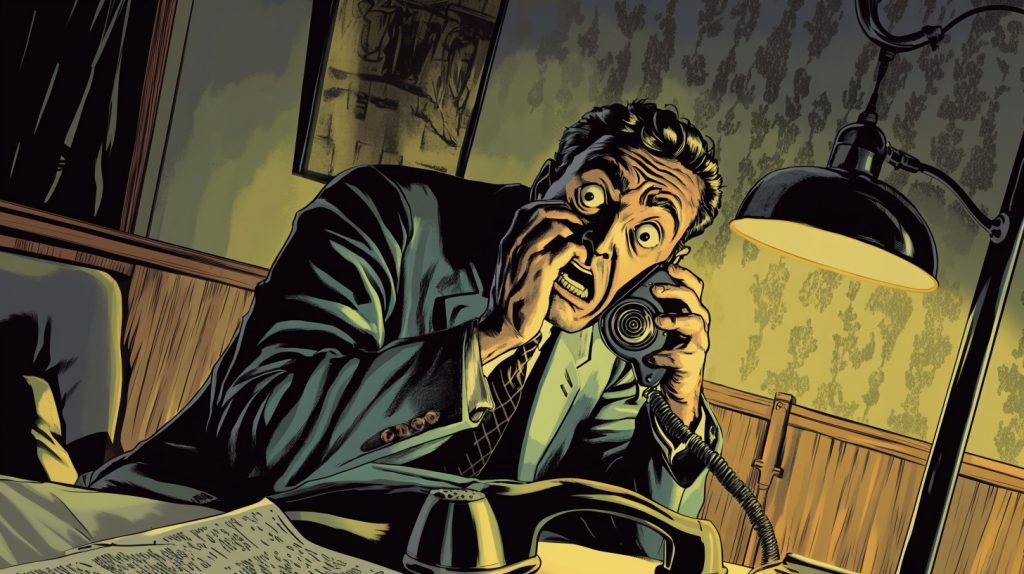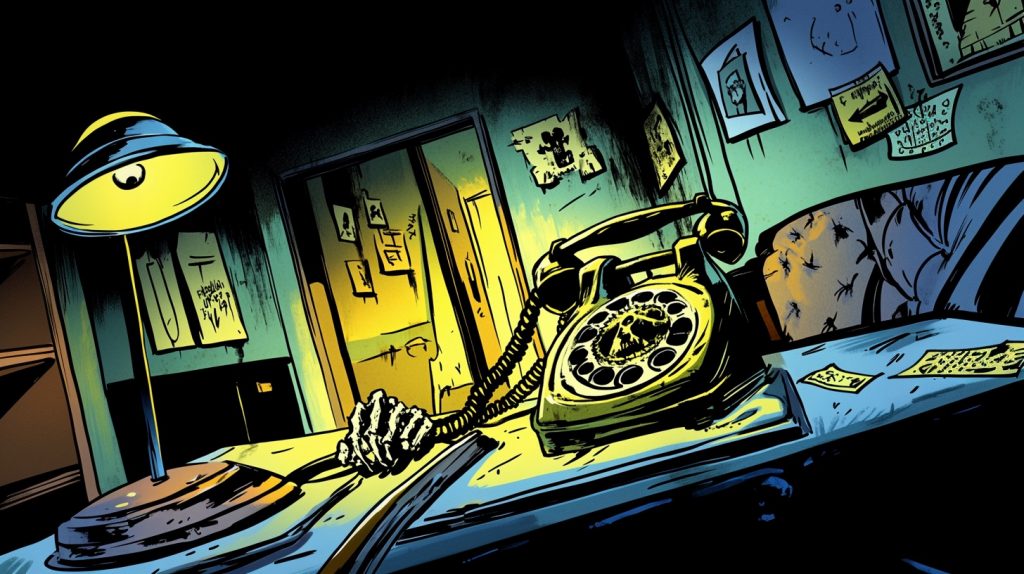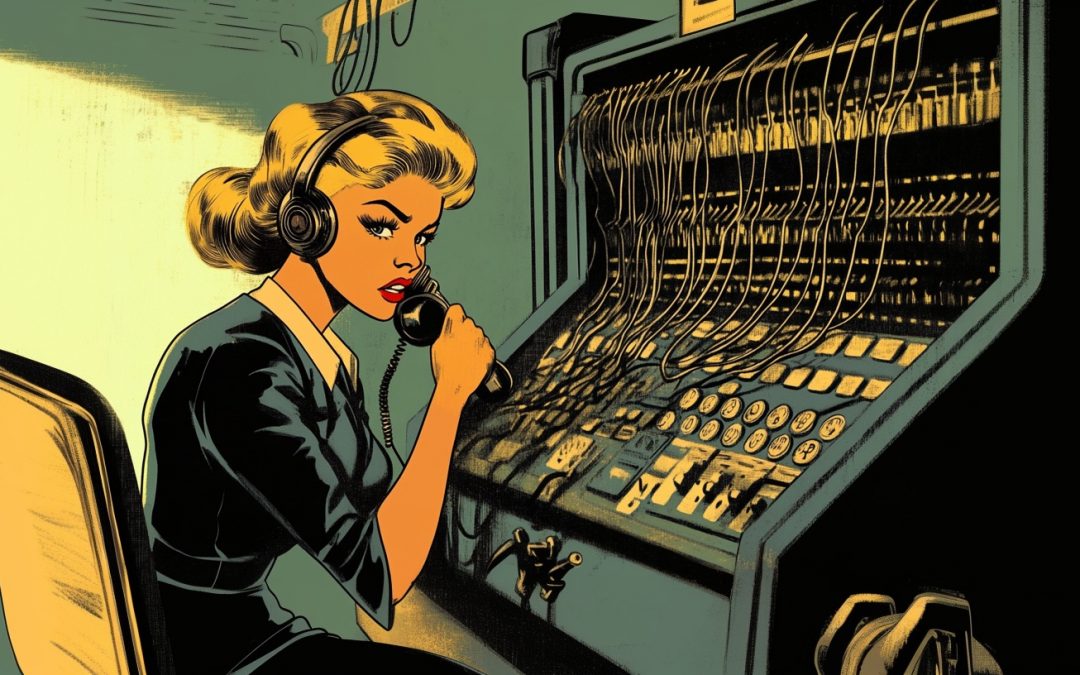A vanished writer, a chilling call, and a body found years later – was it a ghostly tragedy or the greatest hoax in history? The mystery deepens…
For years, New York was gripped by the ghostly enigma of Hugh Schulk who became the originator of the most chilling story ever told.
Was he a failed writer who, through death or deception, found the fame he sought in life? Or was he a fiction? The mystery of the author has only enhanced the mystery of the story he produced.
Now, at last, the case has cracked wide open. The discovery of a skeleton in a locked room, high in the hills where the mystery first began, has reignited the questions: What really happened that fateful night? Was Gail Moncrieff an unwitting participant, or a brilliant trickster
The call that started it all
It began with a call. Or, as Gail Moncrieff, the legendary switchboard operator at Gladstone Telecoms, would always call it— “that damned trumpet”. That was her phrase for the ceaseless ringing, the endless exchanges of voices through the wires. It was just another workday when a man named Hugh – last name unknown at the time – asked to be connected to a number of someone who knew, a man named Cripe “who has the right tools”.
Only the call never went through. Instead of ringing off, Hugh started talking.

What followed became legend, captured in Gail’s furious notes. Hugh, trapped in an old house with no idea how he got there, relayed his predicament to Gail in real-time. He spoke of locked doors, sealed windows, and a presence lurking just outside. Something – not someone, he insisted – was out there. And it meant to kill him.
“Cripe can get me out,” said Hugh.
Gail said, “Do you want me to patch you through to the police?”
Hugh was insistent. He didn’t want that. It didn’t make sense and he didn’t want to be seen as a fool or hoaxer.
- The obsession that consumed Merrick Hobb
- Poet takes a wild ride on wings of eagle
- Book review – Gruesome Tales of Fatal Deaths – gruesome alright
For three long hours, Gail scribbled notes as Hugh narrated his attempts to escape. Every effort – a door forced, a chimney climbed – was met with unseen resistance. The tension built until, suddenly, Hugh’s voice cut off. The line went dead.
Gail tried to call back, but there was no number, no record of the call ever existing. Just her frantic notes, a ghostly whisper through the wires.
The play that made the myth
Determined to find out what had happened, Gail took her notes to the police, the press, anyone who would listen. No one did. She couldn’t find anyone called Hugh Schulk or a handyman by the name of Cripe.
Was this all a joke?
She didn’t think so, even though everyone told her otherwise; her family and friends growing weary of her growing interest.
“Just a wrong number,” one said.
It was true. It was a wrong number. A very wrong number.
One day, in a fit of inspiration, all leads exhausted, she transformed all her notes into something else: a one-woman play. The Trumpet Call debuted in a dingy room above a pub off off Broadway, but soon word spread. Audiences came in droves, caught up in the riddle of Hugh’s disembodied voice. The play became a phenomenon, and Hugh Schulk – whoever he was – became a legend.
Two secret lives
Then came the speculation. Some said Hugh never existed. That it was all an elaborate stunt by Gail, 42. Others dug into the past and found a man who fit the bill: Hugh Schulk, an obscure, failed playwright who had been trying – and failing – to get his various ghost stories staged for years.
And Gail had been an actress in her younger days but had never found fame.
Had Gail somehow been in on it? Had Hugh orchestrated his own disappearance for one final, brilliant success? Or was it exactly as it seemed – a man swallowed by a mystery?
Who can anyone believe?
The body in the locked room
For years, it remained an unsolved riddle. Gail went back to working the wires and occasionally revived her show when interest rallied sporadically.
Then last week, everything changed.
A group of fishermen renting a remote house in the hills in the north of New York State broke into a sealed-off room. What they found sent chills through even the most hardened sceptics: a skeleton, long dead, slumped against the wall. A cord wrapped tightly around its throat.

No sign of forced entry. No record of who had last lived there. But an old, rusted rotary phone sat on the ground, the receiver off the hook, as if someone had made one final call before death claimed them.
The room was in a house that had stood empty for decades. Yet forensic analysis places the time of death within the last ten years – the very window of time when Hugh Schulk had supposedly vanished.
The final twist – or another trick?
So, is this the final proof that Hugh Schulk wasn’t a hoax, but a victim? Did he really call Gail that night, trapped in a ghost’s grip, and die even as the world listened? Or, as some suggest, is this just another turn in the ultimate deception?
Police remain tight-lipped, refusing to confirm whether the remains match Schulk’s dental records. But the evidence – the locked room, the phone, the eerily precise details matching Hugh’s story – raises more questions than answers.
One thing is certain. The legend of Hugh Schulk isn’t over. If anything, it’s only just beginning.
And somewhere, if you listen closely enough, perhaps you can still hear the trumpet call.
Disclaimer
This story was recreated from a smuggled copy of Uncanny Tales of the Unknown and interpreted into illustration by Guardian City animators who are required to remain anonymous. Reproduction is at your own risk.

